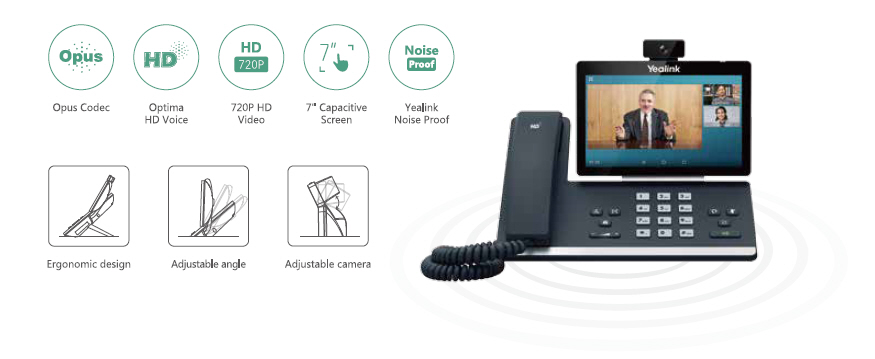Introduction
In today’s fast-paced business environment, every dollar counts. Companies are constantly seeking innovative ways to cut costs without sacrificing quality or service. One effective strategy that has gained traction in recent years is switching to a cloud-based voice solution, such as a VoIP phone system. This transition not only streamlines communication but also offers substantial savings on operational expenses.
As technology evolves, traditional landline systems are becoming obsolete. The cloud offers scalable solutions that can adapt to the unique needs of your business while providing the flexibility essential for growth. In this comprehensive guide, we will explore how businesses can significantly reduce costs by adopting cloud-based voice solutions and delve into the many benefits of VoIP phone systems.
What is a Cloud-Based Voice Solution?
A cloud-based voice solution refers to telecommunications services that utilize internet protocols instead of traditional phone lines. This means all voice communications are routed through the internet rather than through conventional copper wires, allowing for more advanced features and lower costs.
Understanding VoIP Phone Systems
VoIP stands for Voice over Internet Protocol. A VoIP phone system converts audio signals http://johnathanbqne404.theburnward.com/how-sip-trunking-transforms-traditional-voip-phone-systems into digital data packets that travel over the internet. This technology allows users to make and receive calls anywhere there is an internet connection, making it an ideal choice for businesses with remote or distributed teams.
Advantages of Cloud-Based Voice Solutions
Switching to a cloud-based voice solution offers several advantages:
- Cost Savings: Reduced hardware expenses and lower call rates. Scalability: Easily add or remove lines as needed. Flexibility: Access calls from any device connected to the internet. Advanced Features: Includes voicemail-to-email, call forwarding, and conferencing.
How does a Cloud-Based Voice Solution Work?
Cloud-based voice solutions operate through a network of remote servers where all calls are processed via software applications. Let’s break down how this process works:
Call Initiation: When a user makes a call using their VoIP phone, the call data is sent over the internet. Data Transmission: The call data travels through various routers and switches until it reaches its destination. Receiving End: The recipient's device receives the call data and converts it back into audible sound.
This seamless integration showcases how modern technology optimizes communication processes while minimizing costs.
How to Reduce Costs by Switching to a Cloud-based Voice Solution
Switching to a cloud-based voice solution can dramatically reduce your business's telecom expenditures. Here are several strategies on how you can achieve significant cost savings:
1. Eliminate Traditional Phone Lines
Traditional landline systems come with hefty installation fees and monthly charges for each line. By switching to a VoIP phone system, you can eliminate these costs altogether.
2. Leverage Internet Connectivity
Cloud-based voice solutions utilize existing internet connections, which means there’s no need for separate wiring or infrastructure investments.
3. Reduce Long-Distance Charges
VoIP technology allows for free calls between users on the same network regardless of their geographical locations. This can lead to substantial savings on long-distance calling charges.
4. Utilize Cost-Efficient Features
Many VoIP systems come pre-loaded with valuable features such as call recording and real-time analytics at no extra cost—features often charged separately with traditional providers.
5. Scale as Needed
With cloud solutions, adding new lines or features is as simple as clicking a button—no additional hardware required! This scalability means you only pay for what you need when you need it.
6. Minimize Maintenance Costs
Cloud providers handle maintenance and upgrades, saving you from costly IT service contracts or hiring dedicated staff members for support.
The Cost-Benefit Analysis of Switching to VoIP Phone Systems
When considering any major change in operations, it's crucial to conduct a thorough cost-benefit analysis (CBA). Here’s how switching to VoIP phone systems stacks up against traditional options:
| Cost Factor | Traditional Phone System | VoIP Phone System | |------------------------------|--------------------------|--------------------| | Monthly Fees | Higher | Lower | | Installation Costs | Significant | Minimal | | Long-Distance Charges | Substantial | Minimal/Free | | Maintenance | Ongoing | Provider-handled | | Scalability | Limited | Highly Flexible |

This table illustrates that not only do businesses save money by switching but they also gain access to advanced technologies that enhance productivity.
Exploring Advanced Features of Cloud-Based Voice Solutions
One major draw of switching from traditional systems is access to sophisticated features that enhance communication efficiency:
1. Call Forwarding & Routing Options
Efficiently route calls based on availability and location so customers always reach someone who’s able to help them promptly.
2. Unified Communications Integration
Integrate various forms of communication (voice, chat, video) into one platform so employees can collaborate seamlessly regardless of their physical locations.
3. Enhanced Mobility Options
Employees can take their office lines anywhere they go—perfect for remote workers or those constantly on-the-go!
4. Real-Time Analytics & Reporting Tools
Gain insights into call performance metrics directly from your dashboard—helping you make informed decisions based on real-time data rather than guesswork!
Transitioning Your Business to Cloud-Based Communication Systems
Making the switch doesn’t have to be overwhelming; proper planning ensures a smooth transition from traditional phone lines:
Assess Current Needs: Identify what your business requires in terms of features and capacity. Choose Your Provider: Research various providers based on reliability, support services offered, and reviews from other customers. Implementation Plan: Develop an implementation plan detailing timelines and responsibilities throughout the transition phase. Training Employees: Provide adequate training sessions so everyone feels comfortable utilizing new tools effectively. Monitor Performance Post-Switch: Evaluate how well everything operates after going live; make adjustments if necessary!FAQs About Reducing Costs with Cloud-Based Voice Solutions
Q1: What kind of savings can I expect when switching? A1: Many businesses report savings ranging from 30% up to 50% on their monthly telecom bills once they transition fully!
Q2: Are there hidden fees associated with cloud services? A2: Most reputable providers are transparent about costs upfront; however one should always read contracts carefully before signing!
Q3: Will I lose call quality when using VoIP? A3: If configured correctly over stable networks (high-speed broadband), most users find little difference—or even improvements—in clarity compared with traditional methods!
Q4: How secure is my data with these solutions? A4: Leading providers implement robust encryption protocols ensuring excellent security standards protecting sensitive information during transmission!
Q5: Can I keep my existing phone numbers? A5: Yes! Most companies offer number porting services allowing you retain familiar contact details without hassle!
Q6: What happens if our internet goes down? A6: Many platforms provide backup options like automatic rerouting calls through mobile networks ensuring uninterrupted service even amid outages!

Conclusion
In conclusion, embracing modern technology through cloud-based voice solutions provides numerous benefits that extend far beyond mere cost reductions—it enhances overall efficiency while promoting greater flexibility across operations!
By thoroughly understanding what these systems offer—from significant financial savings down through advanced features available—you’ll position your organization well within today’s competitive landscape! So why wait any longer? Start exploring how these innovations could transform YOUR business operations today!
With careful planning alongside diligent execution transitioning won't just minimize expenses but create avenues leading towards sustainable growth moving forward; proving indeed “How To Reduce Costs By Switching To A Cloud-Based Voice Solution” holds true now more than ever!